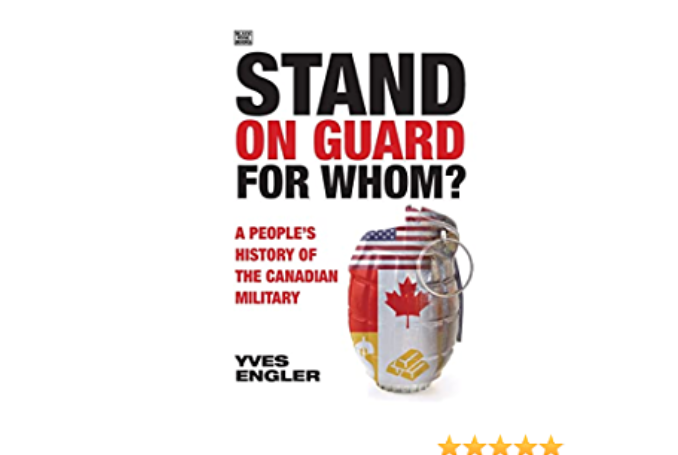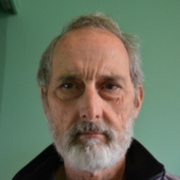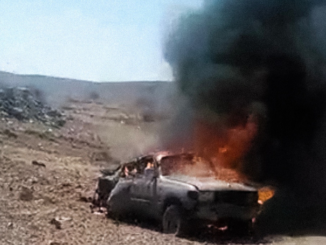
By Jim Miles
(‘Stand on Guard for Whom?’: A People’s History of the Canadian Military, Black Rose Books, Montreal, 2021)
For a short while, at least as announced by the mainstream media, Canada found itself described as a “peacemaker” among the countries of the world. This was an image promoted abroad and valued domestically as Canadian troops, war materials, and military equipment worked around the world to maintain peace.
This necessity for peace, when reviewed critically, came from the reality of the Canadian military forces as an extension of the colonial settler mindset of Great Britain, later adopted to US military supremacy, with a few homegrown initiatives of its own.
Canada is essentially a primary part of the US military empire and operates subordinate to – in most cases – and alongside US military operations in all spheres: actual war fighting, security, interrogation, materials, equipment, research, institutional influences (universities, think tanks – corporate, financial, and political boards of governance) and on.
At the same time the mainstream media reports in accordance with US military doctrine to the degree that US operations are presented as a positive force for good in the world – a position Canada always says it aspires to but in actuality never practices.
‘Stand on Guard for Whom?’
In his series of many books on Canada’s malfeasance domestically and around the world, Yves Engler has covered all these topics, sometimes focussing on relationships with one country (Israel – “Canada and Israel Building Apartheid, 2010), with a region (Africa – “Canada in Africa: 300 years of aid and exploitation”, 2015) or focussing on a variety of mostly domestic political topics, although this latter always spills over into British born, US-dominated foreign policy.
His most recent work “Stand on Guard for Whom? A People’s History of the Canadian Military” brings together all the military elements of Canada’s foreign and domestic policies and actions.
Engler starts the work, as it should, with the British conquest of the indigenous people of North America with the British imperial racism and arrogance giving the genocidal directive, “You will do well to try and inoculate the Indians by means of blankets as well as try every other method that can serve to extirpate this execrable race.”
The genocide was successful from the perspective of the “wealthy and the powerful” in order to “build a capitalist economy. The military was critical for accomplishing these tasks.”
From that beginning, the Canadian military forces have performed domestically in support of the government over certain classes of people, workers, laborers, and the ongoing battle with the indigenous people. For foreign affairs Canada supported British imperial objectives around the world, supporting the Boer War, and committing a large number of soldiers to World War I and World War II. After the decline of British military adventurism, Canada willingly became associated with US military practices around the world.
Working with Uncle Sam
All Canadian military activity is operated in liaison with the US military. Naval, air and land forces are all well integrated through NATO, NORAD, NAFTA (for the corporate-financial sector) and other institutional organizations. All wars post-WW II involving the US – as most wars do – had the support and participation of Canada to some degree or other with the modern military focused on NATO and Israel.
Engler describes the not-so-obvious sectors of Canada’s military standing on guard for the US empire. Canadian special forces operate under secrecy and with a lack of political responsibility. International aid, the winning of “hearts and minds”, and many different research centers operate in full cooperation with US interests. Chemical and biological weapons have found a testing ground in Canada, all “…veiled in secrecy.
The intended harm was so great and the idea so distasteful to most that the work had to be conducted in secret.” Canada belongs to the “Five Eyes” group of intelligence gathering agencies – its budget and size are not public information, “little is known about their operations since there is no external oversight.”
In all areas, Canada is “Subject to Uncle Sam”. That idea is evident throughout the book but is emphasized in the chapter of the same title. Those who are aware of Canada’s foreign policy should also know that both Trudeau and Foreign Minister Chrystia Freeland have an American first policy when it comes to defining Canada’s foreign policy.
Other concerns are also looked at more directly: veterans affairs (or war promotions?), marketing militarism (largest PR machine in Canada), lies and propaganda (in particular with embedded journalism and various corporate-government interactions), and above all a description of Canada’s military-industrial complex. The latter is a “significant economic force” as with the US, and “Few politicians criticize weapons manufacturing, the harm caused to people elsewhere or the corruption often associated with arms sales.”
Solutions to the Militarization of Society
At the end of “Stand on Guard for Whom? A People’s History of the Canadian Military” Engler provides possible solutions. As the book was published in 2021 and therefore researched before that, perhaps some of the solutions are arriving already, not necessarily in a convenient manner.
As the US is edging into economic decline and possible economic freefall, Canada will follow suit as our economy is fully dependent on the same kind of system as the US and is fully integrated into those systems. Unfortunately, that may well increase the militarism of the state as it strives to retain control of a shrinking sphere of influence, but for the “rest of the world”, the majority – that probably would prefer to live outside US hegemonic domination and destruction (infrastructure and environmental) – may rest easier without Canada operating in its faux role of peacekeeper.
More…
In 2014 Canada was the first NATO country to send ‘advisors’ and ‘trainers’ to Ukraine after the Maidan coup (during which the Canadian embassy served as a safe house for some of the militants involved). Since WW II and the 1948 nakba in Palestine, Canada has consistently aided and sided with Israel in its colonial-settler apartheid endeavors.
Haiti has suffered for centuries under racist domination by colonial settler European initiatives and Canada has played a significant role – a leading role in parts – in keeping Haiti as a colonial enterprise. Chrystia Freeland led the way with the “Lima Group” now unofficially disbanded in part due to Lima no longer being part of the group, among its many other faults and flaws of anti-democratic actions and propaganda.
Canada is not a peacekeeping country. It does not care about the democratic rights and sovereign rights of other countries to live without foreign interference. Yes, “we stand on guard for thee” (from the Canadian anthem) as long as “thee” belongs to the US empire.

– Jim Miles is a Canadian educator and a regular contributor/columnist of opinion pieces and book reviews to Palestine Chronicles. His interest in this topic stems originally from an environmental perspective, which encompasses the militarization and economic subjugation of the global community and its commodification by corporate governance and by the American government.







